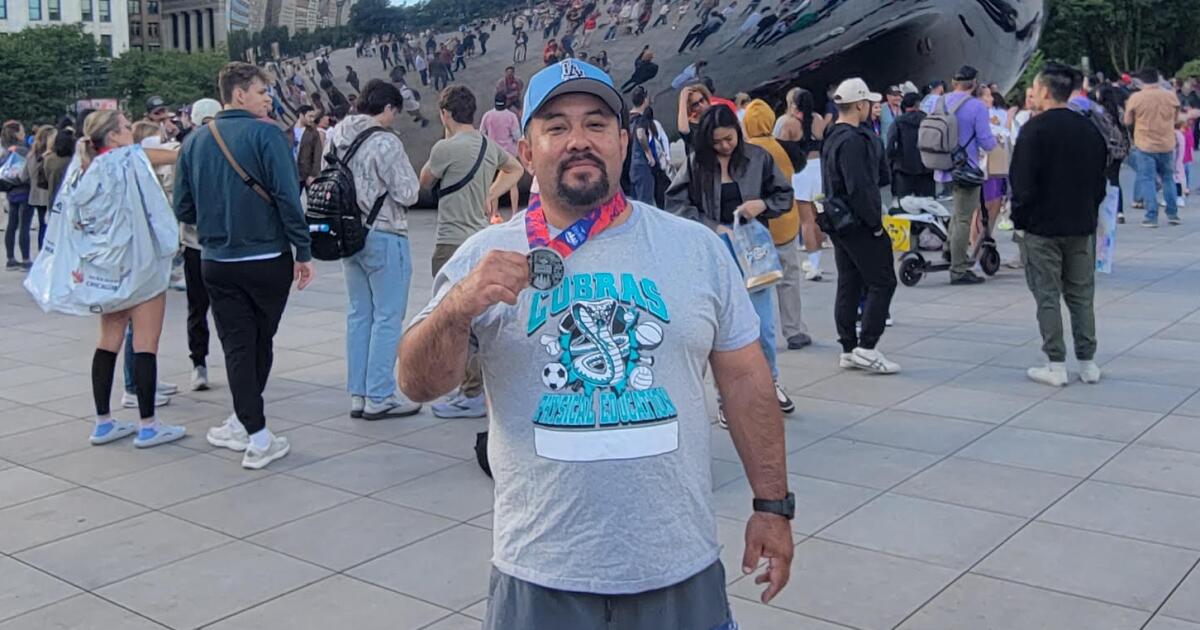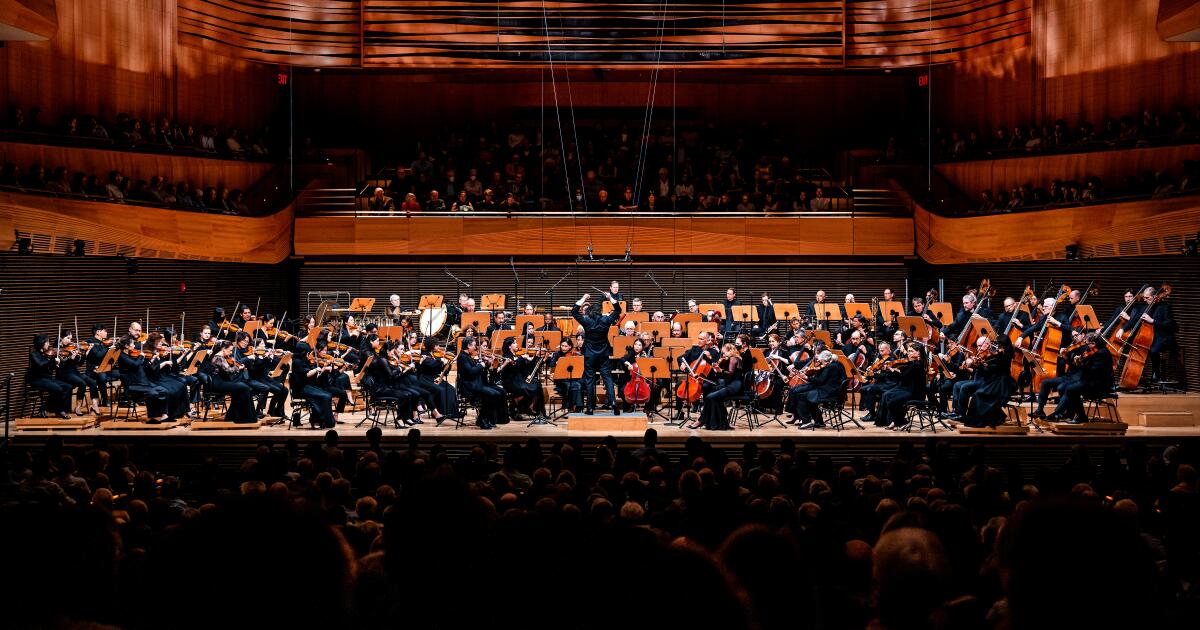Tuesday, Oct. 14, would have been the 32nd birthday of Charlie Kirk, the right-wing political influencer murdered last summer. It is a birthday shared by George Floyd, Jr., asphyxiated by arresting police in 2020 and who would have been 52. The horror of these tragedies has roiled a divisive society, but must they now demand a political battleground of opposing memorials?/
The concept of a civic memorial has long and often been, in Western culture, the privilege of classical music. Music may be permitted to speak not of specifics but the essence of grief, a collective cherishing of existence.
There happens to be another anniversary, Tuesday, to acknowledge. Leonard Bernstein, a great gatherer of differences in his music, died Oct. 14, 1990, at 72. And all around us, as we approach the 35th anniversary of his death, are reminders of Bernstein as the megastar memorializer of the 35th president of the United States, and what those tributes to John F. Kennedy might mean for us today.
The must-see Los Angeles Opera production of “West Side Story,” which closes Sunday, is by Francesca Zambello, who heads Washington National Opera at the John F. Kennedy Center for the Performing Arts, and where she is slated to mount her production of Bernstein’s classic musical in May. Saturday night at the Soraya in Northridge, Martha Graham Dance Company gave the world premiere of “En Masse,” which is based on Bernstein’s “MASS,” written to open the Kennedy Center, where “En Masse,” too, is headed in the spring.
Along with all that, Gustavo Dudamel caps his three fall weeks leading the Los Angeles Philharmonic this weekend with four performances of Mahler’s Symphony No. 2 at Walt Disney Concert Hall. Bernstein chose this epic score, known as the “Resurrection,” to memorialize Kennedy two days after his assassination in 1963. A large New York Philharmonic, vocal soloists and chorus assembled on a CBS sound stage for a live national television broadcast.
It was a Sunday and untold millions (there were no Nielsen ratings) gathered in their homes to watch a somber Bernstein begin Mahler’s symphony with gut-wrenching intensity and end it with an overwhelming sense of triumph 90 minutes later. As a legendary act of national healing, the broadcast riveted a shocked nation.
It still does. The following year, Bernstein channeled that Kennedy spirit into a famous performance of Mahler’s symphony at London’s Ely Cathedral that was televised in Britain and released on commercial video. It is that Mahler Second performance that Bradley Cooper chose as the musical centerpiece of his Bernstein 2023 biopic, “Maestro.”
Bernstein further memorialized JFK in the dedication of his Third Symphony, “Kaddish.” And then there was the Kennedy Center opening in 1971, with Bernstein doing the shocking. At the time and for the occasion, “MASS” seemed a bizarre mashup of pop, schlock, jazz, 12-tone, electronics, grand symphonic utterances, hippie currency, mysticism, traditional Catholic Mass, Jewish Sabbath service, anti-Mass climaxing with a psychotic and psychedelic breakdown of Mass’ celebrant and Vietnam War protest.
The general reaction to “MASS” was that of appall, no matter whether you worshipped Bernstein or couldn’t bear him, whatever your political or cultural orientation. President Nixon — who as vice president in the 1950s had attended a Bernstein festival of American music at the Hollywood Bowl and had accompanied Bernstein and the New York Philharmonic on a cultural tour to South America — stayed home.
In fact, “MASS,” after years of puzzled neglect, ultimately came to be heralded as a Bernstein masterpiece, a work that freed contemporary music of genre-fication. It gives permission not for anything goes but for anything goes together if you can find the right context. A slow awareness of the score’s genius has empowered a new generation, such as the conductor and composer Christopher Rountree, who made the new arrangement of parts of “MASS” for his genre-breaking orchestra, Wild Up.
The Graham company based “En Messe” on a flimsy premise, the discovery of a page or two of sketches that Bernstein made for a proposed score he meant to write for Graham in 1988. The discovery is minor. Bernstein and Graham knew and admired each other, but she was a footnote in his career.
In the end, Rountree wrote a short series on variations on two themes he extracted from the sketches that serve as an epilogue to the “MASS” suite. The themes are hard to discern and don’t matter. Rather, Rountree makes a gripping case in his variations for a way forward from Bernsteiniana to today.
The intent of “En Messe” was meant to cap a celebration of the 100th anniversary of the Graham company, the oldest dance company in America. Graham 100 began a year ago with a revival of “Appalachian Spring,” Graham’s most famous piece, which also gave us Aaron Copland’s iconic score (the popularity of which was greatly helped by Bernstein’s recording).
The company has also revived another of Graham’s most important (and severe) dances, “Night Journey,” based around the last moments of the life of Jocasta (the mother of Oedipus in the Greek tragedy). The revival with Anne Souder as an imposing Jocasta, Lloyd Knight, an enthralling Oedipus, and Ethan Palma, a haunted Tiresias (the seer), retained all the work’s stunning power. William Schuman’s mostly forgotten score received a revelatory performance by Rountree and Wild Up.
“En Messe,” itself, did not serve its purpose to cap a centennial closer to the work of a seminal choreographer. It accomplished something more important by heralding a path forward. The company can’t live forever reviving Graham’s work or doing showy new dances such as “We the People” (also on the program).
Instead, Hope Boykin’s choreography added a dark intensity to Bernstein’s brightness. The stage was dim. Each dance featured a soloist in seeming personal meditation with the music, its rhythms and its spirit, and with the company’s other dancers, who appear ghostly figures in the misty distance.
Movement didn’t match music but brought you into it, while the music seemed to demand movement. It began with the score’s hit, “A Simple Song,” Bernstein at his most tuneful, even saccharine. Jodie Landau didn’t buy into its surface simplicity but sang with a fresh, cool, contemporary edge that immediately told you we were headed into unknown territory. Every discovery that followed proved her right on.
“En Messe” will tour the country and beyond over the next year with, unfortunately, a recording of Wild Up, not live performance. If the company gets over its overamplification, which cheapens everything it presents, that need not disastrously lessen the impact.
Will “En Messe,” or “West Side Story,” actually reach the Kennedy Center, which the federal government is attempting to turn it into who-knows-what, this spring? Both Bernstein works are exactly what the new overseers say they want — more populist art, inspirational attempts to make American art great. But they are also works that make us look inside ourselves, discover what matters beyond self-interest. That’s become a hard sell.



